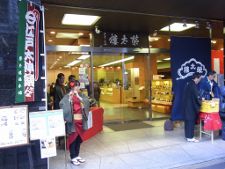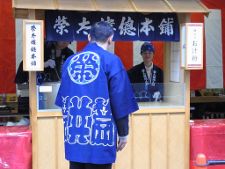January 11th is the day of mirror opening.
At Nihonbashi Eitaro Sohonbu, from 14:00 on the 9th, the first 500 people will behave the annual "mochi soup powder".
This year, since the 11th is the weekend, it will be advanced to Friday on weekdays.
At the store, the sound of the music of the Tokyo Metropolitan Intangible Folk Cultural Property “Edo Dai-Kagura (a popular performing art centered on lion dance and acrobatics, which is said to have a history of 400 years)” is played by Maruichi Senosha, enlivening the New Year mood. I am.
Kagamibiraki is an annual event in which kagami mochi, which had been offered to household miniature shrine and tokonoma as a New Year's decoration, thanks to Shinto and Buddha, praying for sound health, and eating with zoni or soup powder.
Inside the store, there is a fine "Edo" Omochi "<Gufoot decoration>".
"After the Warring States period, in samurai families, rice cakes offered in front of armor are called" armor mochi (decoration) ".
In Edo, the townspeople imitated this, and in merchants did not have armor, so they imitated them in lucky items and decorated them. Our shop has been following this shape since the old days of Edo.
There is an appendix with the content.
Once again, I felt the weight of the long-established succession of Japanese shop curtain, and I had hot soup powder.



